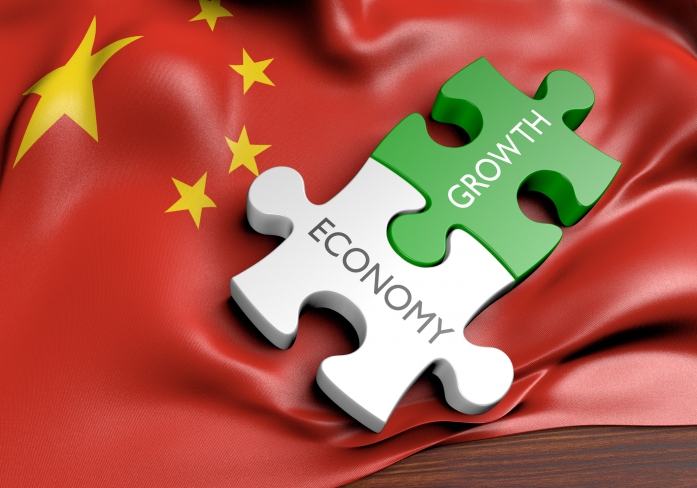
The Middle Kingdom has lots of room to grow if it could sort out economic distortions and optimise capital allocation. The tweaking of the one-child policy might also help
In a presentation at the recent Ho Bee Professorship in Chinese Economy and Business lecture titled “China’s Paradox and its role in the global economy”, Dr. Jin Keyu of the London School of Economics posited that China’s various economic issues – excess savings and capacity, high leverage and debt, low consumption etc. – should not be treated as disparate issues but instead as developments interlinked by “a common thread and reflect common roots”.
Jin referred to a ‘vicious circle’ that contained four elements that reinforce one another:
- Financial repression + wage suppression;
- Suppression of households and households’ share of GDP;
- Subsidising firms; and
- Low consumption, high investment and exports
“Over 2000 to 2014,” Jin explains, “real GDP grew by over three times in China. If you’re a saver in China, and you held bank deposits, you would have lost about 21 percent. If you held stocks over that period, you would have lost 38 percent. No matter how you saved, you’d have lost money.”
There are many reasons for the stock market’s underperformance. The Shenzhen and Shanghai Stock Exchanges were created at the end of 1990 with the initial purpose of helping State-Owned Enterprises (SOEs) privatise. Listing criteria were not as stringent as those in developed economies, and Jin wrote that firms with “connections to regulators are more likely to be listed”.
Additionally, bad firms do not delist as soon or as frequent as they should. According to Jin, only about one percent delist every year compared to 10-20 percent on average in other countries, with poor performing firms lingering on the exchanges and contributing to poor stock performance.
Making matters worse are distortionary government policies that “subsidise corporates and exports, because that was the national economic strategy. The end result was a suppression of households as reflected by the declining household share” of GDP, which dropped to about 60 percent in the late 2000’s from 70 percent in 1990 despite China’s breakneck economic growth during the same period.
“On top of that, subsidies to the firms mean that there’s going to be low consumption and high investment and high exports,” Jin explains, rounding out the vicious circle. “So what do you do to keep high GDP targets going? It would be brave to rely on households to consume to achieve a healthy way of expansion, so China had to rely on higher investments and exports, which leads to more distortionary policies in place which aren’t just financial repression and wage suppression but also exchange rate under-valuation, capital controls and a series of distortionary policies.
“What all this illustrates is that all the complaints we have about the Chinese economy might just be part of the same puzzle. They might not have such independent causes, but they might be interconnected by common causes. To break this vicious circle presents another opportunity for growth, but it is very hard to do.”
Growth opportunity?
Jin also pointed out growth opportunities for China, arguing that the country does not need “new resources to grow [but instead] it simply needs to reallocate and reshuffle to go from low to high productivity areas and that shows up as growth”.
Highlighting the falling share of employment in the low-productivity agriculture sector to higher-productivity manufacturing and industrial sectors – from 70 percent in 1978 to 28.3 percent in 2015 – Jin points out how much more resource allocation can be done.
“A lot of resources have been reallocated but a lot of that has been labour reallocation. What still remains is capital reallocation. While the state sector contributes about 30 percent of GDP, it accounts for less than 15 percent of total employment, but guess how much investment it occupies? It occupies more than 50 percent of national investment.
“If we reallocate capital, it would provide substantial room for growth. Question is: Will it happen?”
With regard to the prospect of China becoming a consumption-led economy, Jin pointed to the obstacle that is the high household savings rate which has gone from 10 percent to 35 percent on average over the past 20 years. Citing pension reforms as a counterargument against the need for increased savings, and the slow-moving nature of cultural norms to contrast how much savings rates have increased in just one generation, Jin believes it comes to a social initiative: the one-child policy.
“Monetary compensation is one type of compensation,” says Jin, pointing to data that show those in the 45-65 years age group as having lower expectations of being financially supported by their children in retirement than those over 65 years of age. “There’s also co-residence. If you had four or five children, you had a 90 percent chance of living with one of them. If you had three you had a little less chance, if you had just one the likelihood is a lot smaller than if there were many kids. There are many benefits of having more children.
“With the one-child policy, you couldn’t depend completely on your one child. You now have to save on your own, and that is one of the reasons the one-child policy could have affected people’s saving behaviour.”
She adds: “It’s not really a joke because it’s in my economic papers, but I make it as a joke: To put it in economic terms, Chinese see children as investment goods. I raise them, I invest in their education, and they get better jobs and higher wages, and they pay back on that investment. It’s like an investment portfolio.
“The Westerners see children as consumption goods. They like children, they like having lots of children, and they have to spend a lot of money on them but that’s about it.”
Follow us on Twitter (@sgsmuperspectiv) or like us on Facebook (https://www.facebook.com/PerspectivesAtSMU)
Last updated on 27 Oct 2017 .